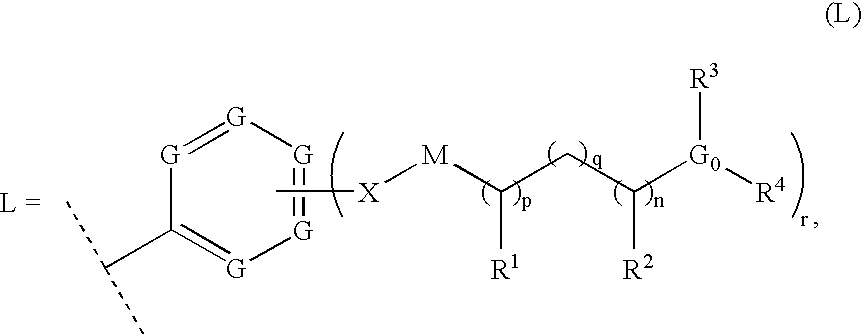Thiazole inhibitors targeting resistant kinase mutations
a technology of thiazole and resistance kinase, which is applied in the field of thiazole, can solve the problems of drug resistance, clinical resistance to the drug, and mutations of bcr-abl kinase, and achieve the effects of improving drug safety, reducing drug resistance, and improving drug safety
- Summary
- Abstract
- Description
- Claims
- Application Information
AI Technical Summary
Benefits of technology
Problems solved by technology
Method used
Image
Examples
example 1
General Methods
[0089] All experiments were performed under anhydrous conditions (i.e. dry solvents) in an atmosphere of argon, except where stated, using oven-dried apparatus and employing standard techniques in handling air-sensitive materials. Aqueous solutions of sodium bicarbonate (NaHCO3) and sodium chloride (brine) were saturated. Analytical thin layer chromatography (TLC) was carried out on Merck Kieselgel 60 F254 plates with visualization by ultraviolet and / or anisaldehyde, potassium permanganate or phosphomolybdic acid dips. Reverse-phase HPLC chromatography was carried out on Gilson 215 liquid handler equipped with Waters SymmetryShield™ RP18 7 μm (40×100 mm) Prep-Pak cartridge. Mobile phase consisted of standard acetonitrile (ACN) and DI Water, each with 0.1% TFA added. Purification was carried out at a flow rate of 40 mL / min. NMR spectra: 1H Nuclear magnetic resonance spectra were recorded at 500 MHz. Data are presented as follows: chemical shift, multiplicity (s=single...
example 2
5-(4-Methoxystvryl)thiazol-2-amine (Intermediate 1)
[0090]
[0091] To a solution of 5-bromothiazol-2-amine hydrobromide (130 mg, 0.5 mmol) in 1,2-dimethoxyethane (DME, 4 mL) was added solution of (E)-2-(4-methoxyphenyl)vinylboronic acid (89 mg, 0.5 mmol) in EtOH (1 mL), solution of Na2CO3 (212 mg, 2.0 mmol) in H2O (1 mL), and Pd(PPh3)4 (58 mg, 0.05 mmol). The mixture was heated at 110° C. for 15 min in microwave. The solid was filtered off and washed with EtOAc. The filtrate was washed with brine (1×100 mL). The organic solution was separated. The aqueous was extracted with EtOAc (2×10 mL). The combined organic phase was dried (Na2SO4) and concentrated until 5 mL remaining. Hexanes (100 mL) were added to the above solution and the solid collected by filtration. The title intermediate was used for next step without further purification.
example 3
4-((E)-2-(2-(4-(Piperidin-4-ylsulfonyl)phenylamino)thiazol-5-yl)vinyl)phenol (Compound I)
[0092]
[0093] To a solution of intermediate 1 (0.12 g, 0.5 mmol) in 1,4-dioxane (20 mL) was added tert-butyl 4-(4-bromophenylsulfonyl)piperidine-1-carboxylate (295 mg, 0.73 mmol), Cs2CO3 (954 mg, 3.0 mmol), Pd2(dba)3 (65 mg, 0.07 mmol), and 4,5-bis(diphenylphosphino)-9,9-dimethyxanthene (Xant Phos, 122 mg, 0.21 mmol). The mixture was heated under reflux overnight under Ar. The solid was filtered off and the filtrate washed with brine (1×50 mL). The organic solution was separated and dried (Na2SO4). The solution was concentrated until 5 mL remaining and hexane (50 mL) was added, the solid was collected by filtration. The solid was dissolved in anhydrous CH2Cl2 (2mL) and the 1.0 M BBr3 in CH2Cl2 (1.2 mL, 1.2 mmol) was added. The reaction was stirred for 2 h at room temperature. The saturated NaHCO3 (20 mL) was added. The organic layer was separated and solid (containing product) collected by filtr...
PUM
| Property | Measurement | Unit |
|---|---|---|
| flow rate | aaaaa | aaaaa |
| temperature | aaaaa | aaaaa |
| temperature | aaaaa | aaaaa |
Abstract
Description
Claims
Application Information
 Login to View More
Login to View More - R&D
- Intellectual Property
- Life Sciences
- Materials
- Tech Scout
- Unparalleled Data Quality
- Higher Quality Content
- 60% Fewer Hallucinations
Browse by: Latest US Patents, China's latest patents, Technical Efficacy Thesaurus, Application Domain, Technology Topic, Popular Technical Reports.
© 2025 PatSnap. All rights reserved.Legal|Privacy policy|Modern Slavery Act Transparency Statement|Sitemap|About US| Contact US: help@patsnap.com



